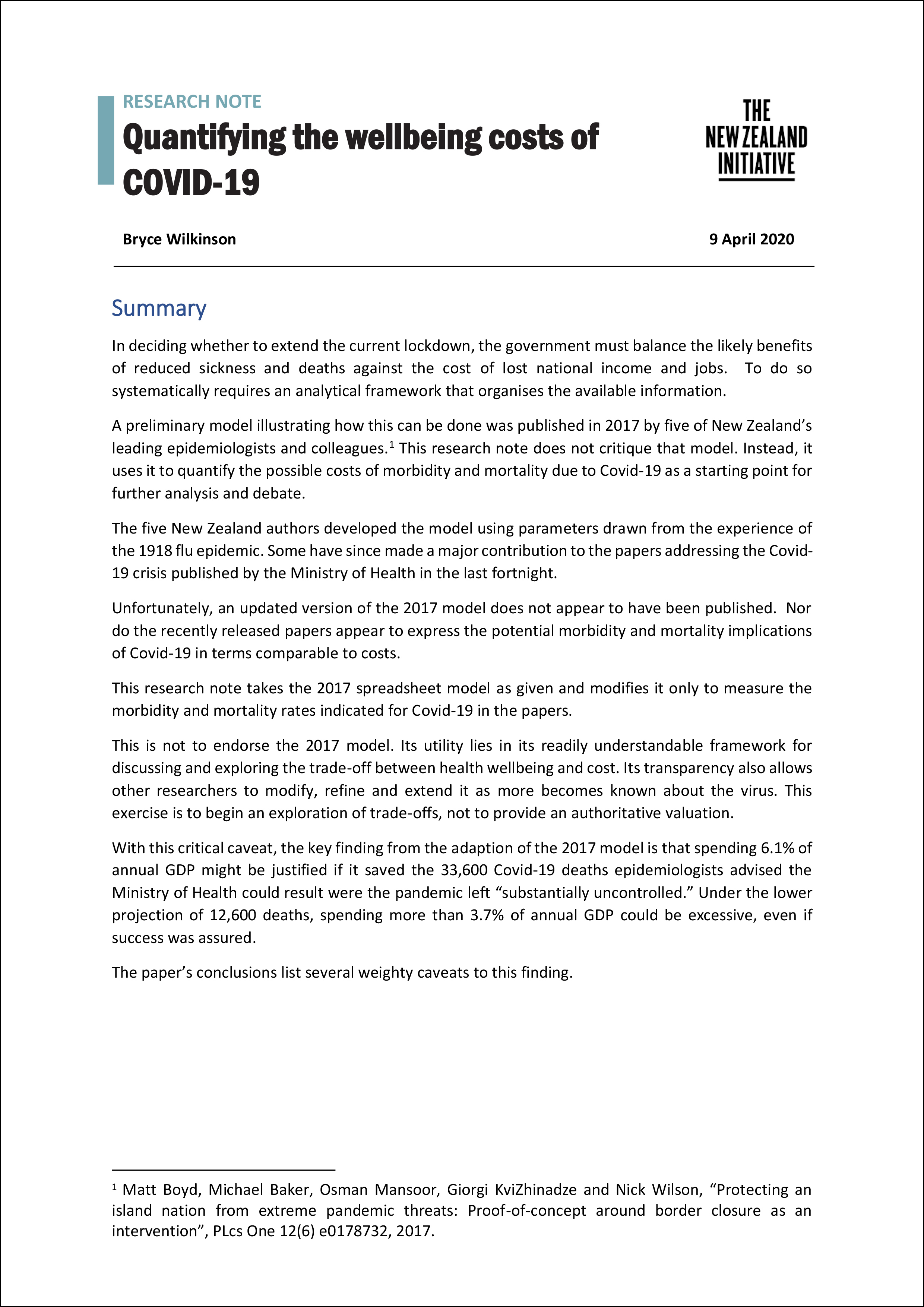In deciding whether to extend the current lockdown, the government must balance the likely benefits of reduced sickness and deaths against the cost of lost national income and jobs. To do so systematically requires an analytical framework that organises the available information.
A preliminary model illustrating how this can be done was published in 2017 by five of New Zealand’s leading epidemiologists and colleagues.1This research note does not critique that model. Instead, it uses it to quantify the possible costs of morbidity and mortality due to Covid-19 as a starting point for further analysis and debate.
The five New Zealand authors developed the model using parameters drawn from the experience of the 1918 flu epidemic. Some have since made a major contribution to the papers addressing the Covid-19 crisis published by the Ministry of Health in the last fortnight.
Unfortunately, an updated version of the 2017 model does not appear to have been published. Nor do the recently released papers appear to express the potential morbidity and mortality implications of Covid-19 in terms comparable to costs.
This research note takes the 2017 spreadsheet model as given and modifies it only to measure the morbidity and mortality rates indicated for Covid-19 in the papers.
This is not to endorse the 2017 model. Its utility lies in its readily understandable framework for discussing and exploring the trade-off between health wellbeing and cost. Its transparencyalso allows other researchers to modify, refine and extend it as more becomes known about the virus. This exercise is to begin an exploration of trade-offs, not to provide an authoritative valuation.
With this critical caveat, the key finding from the adaption of the 2017 model is that spending 6.1% of annual GDP might be justified if it savedthe 33,600 Covid-19 deaths epidemiologists advised the Ministry of Health could result werethe pandemic left “substantially uncontrolled.” Under the lower projection of 12,600 deaths, spending more than 3.7% of annual GDP could be excessive, even if success was assured.
The paper’s conclusions list several weighty caveats to this finding.
You can download the spreadsheet 'Modelling value of health costs of Covid-19' here.





